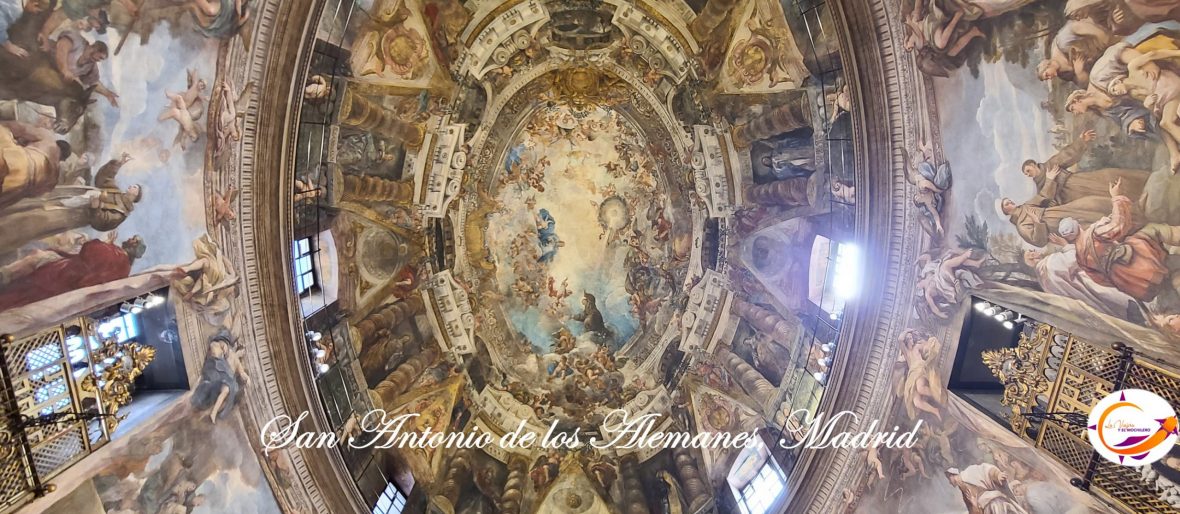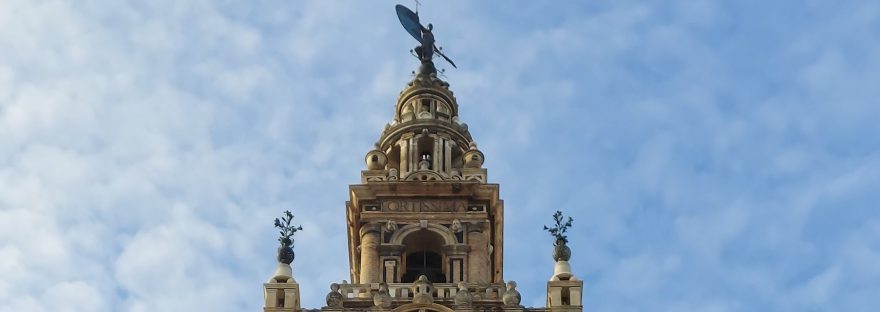We would say that the Giralda is the most photographed bell tower in Seville. From different points of this beautiful Spanish city, both walking and from the viewpoint of the Setas, you can see the Giralda standing elegantly next to the Cathedral of Santa Maria de la Sede. And although today, there are buildings that exceed its height, in its day, the Giralda was the tallest tower in the world standing at 97.5 meters high or 320 feet. In 1928 the cathedral, including the Giralda, was declared a National Monument and in 1987 it was added to the list of World Heritage Sites.

Its construction dates back to the Almohad period, when the city of Seville became the capital of Al-Andalus, which enabled the city to improve its infrastructure, which began with the construction of important buildings. Thus also began the construction of a new mosque on the site currently occupied by the cathedral. The construction of this new Almohad mosque of Seville was begun in 1184 by order of Abu Yaqub Yusuf. The addition of the Giralda was based on the minaret of the Kutubia mosque in Marrakech (Morocco), also built in the twelfth century.
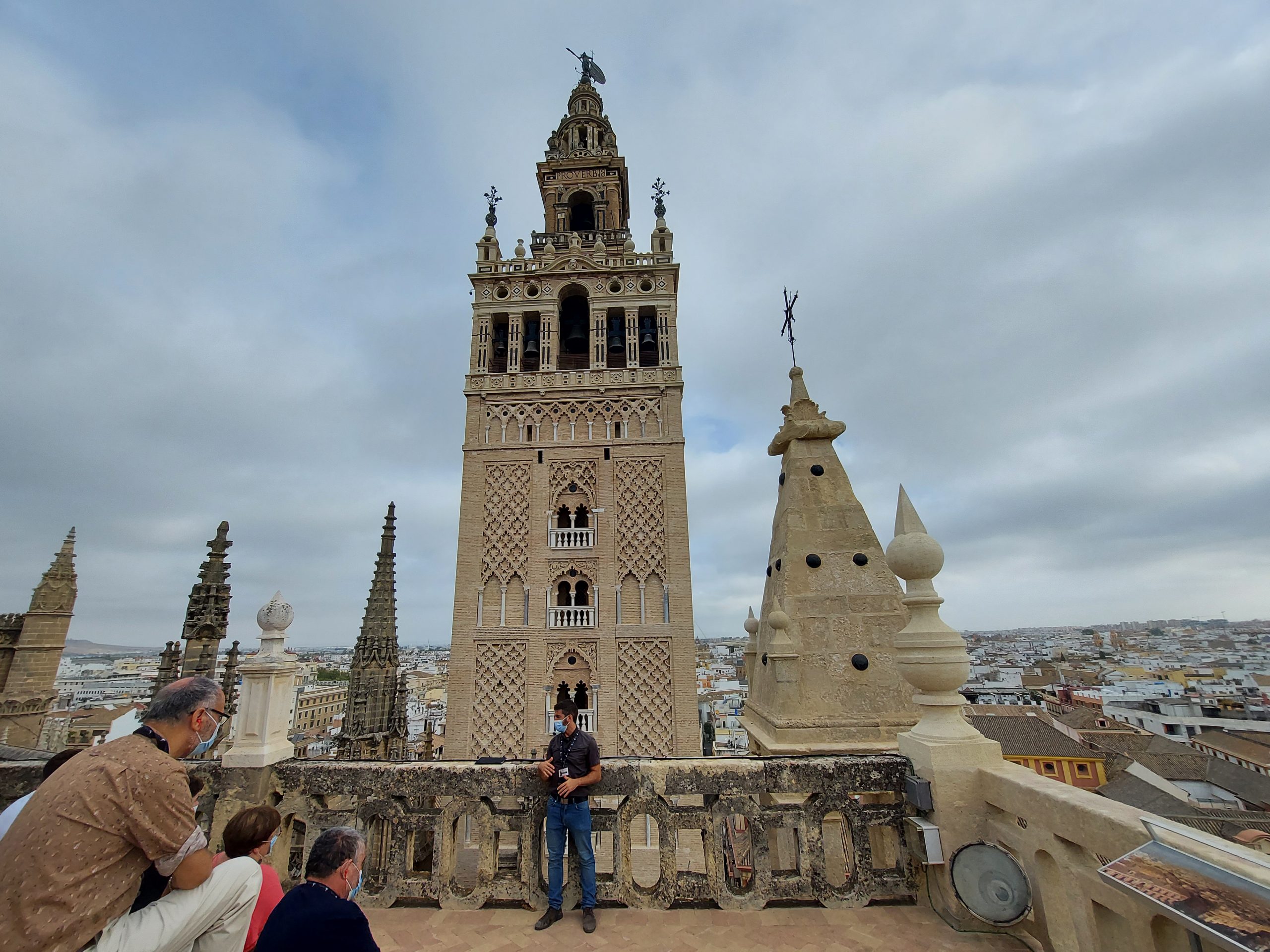
It should be noted that the climb up the Giralda is done via 35 ramps. In fact, it is said that the ramps were wide enough at that time to allow the sultan to climb them on horseback to see the city from above. We do not know if this is really true, given the actual dimensions.
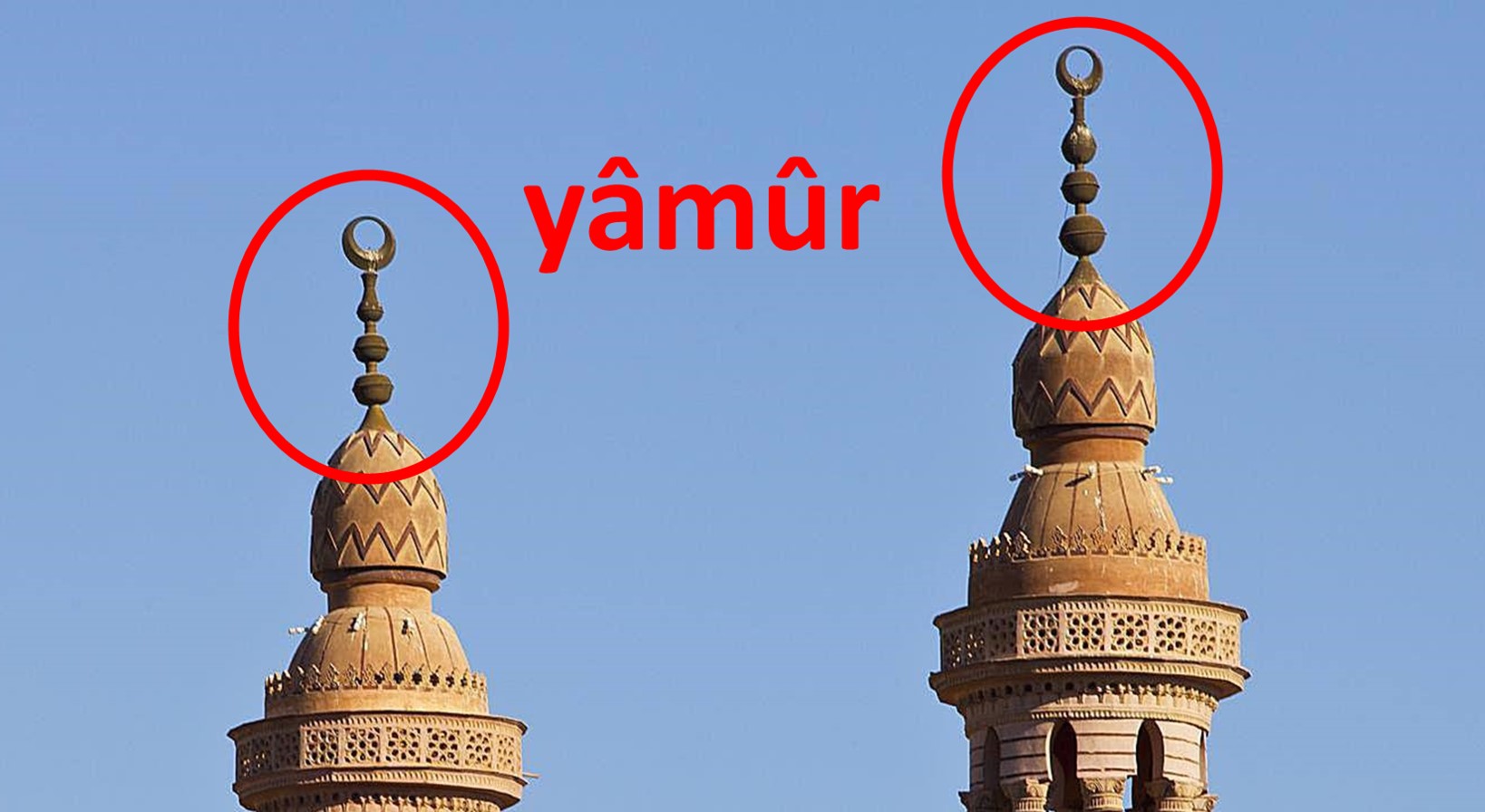 The mosque was consecrated as a Christian temple in 1248 by the Castilian-Leonese king, Fernando III, when he conquered the city of Seville. It was the custom of the Christians at the time of conquering Muslim populations, to convert the minaret into a bellfry, as well as to remove the yâmûr to place a cross and, under it, a weather vane. However, in this case the yâmûr was not removed. A yâmûr in Arab culture to the ornament that frequently crowns the minarets and mosques and consists of golden balls or apples strung on a vertical rod. Unfortunately, an earthquake in 1356 caused the collapse of the four bronze spheres that crowned the tower.
The mosque was consecrated as a Christian temple in 1248 by the Castilian-Leonese king, Fernando III, when he conquered the city of Seville. It was the custom of the Christians at the time of conquering Muslim populations, to convert the minaret into a bellfry, as well as to remove the yâmûr to place a cross and, under it, a weather vane. However, in this case the yâmûr was not removed. A yâmûr in Arab culture to the ornament that frequently crowns the minarets and mosques and consists of golden balls or apples strung on a vertical rod. Unfortunately, an earthquake in 1356 caused the collapse of the four bronze spheres that crowned the tower.

The main body of the bell tower is square, with the west side facing the “Patio de los Naranjos” (Field of Oranges / Orange trees), the east side facing the “Plaza de la Virgen de los Reyes”, the north side facing in the direction of Placentines Street and the south side facing the “Plaza del Triunfo”.
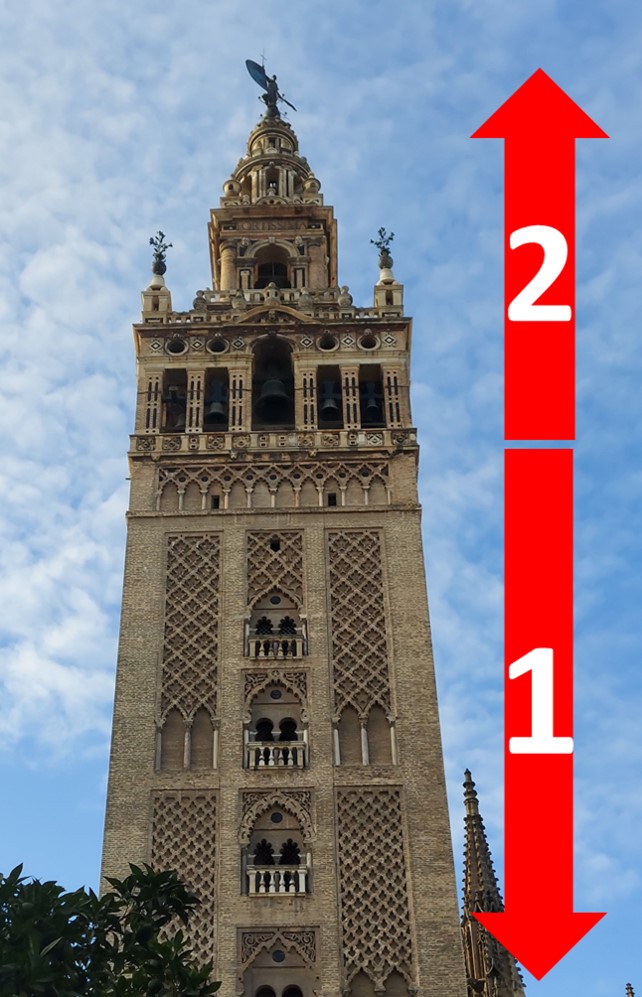
The tower is made up of two different bodies, although perfectly united, showing a clear example of the union of styles. The last body of the Almohad tower was replaced due to the deterioration suffered in the sixteenth century. Hernán Ruiz worked on a Renaissance style finial between 1558 and 1568 in which the following parts can be distinguished:
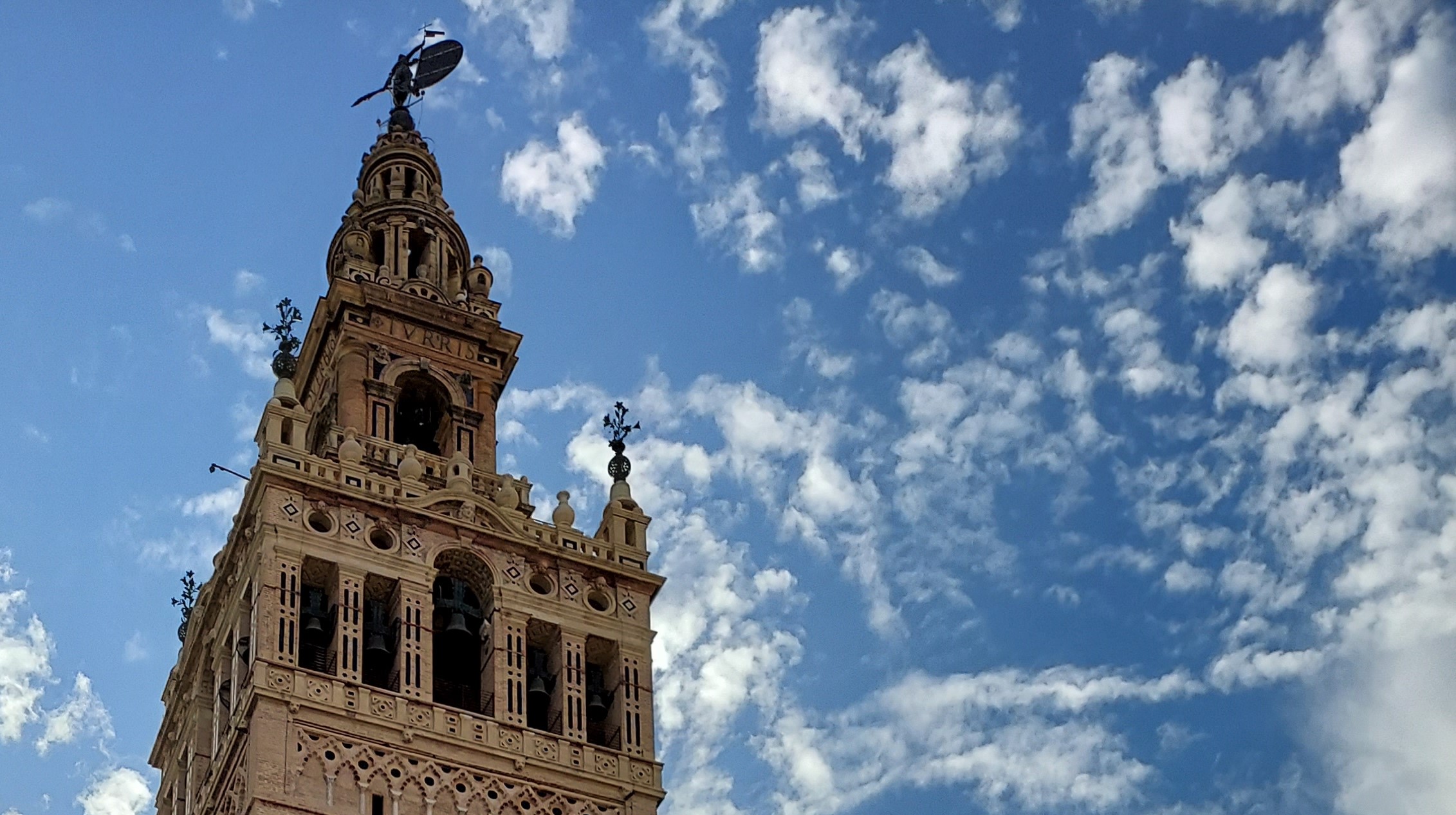
- First, there is the body of bells with the same square surface as the lower part and where we can appreciate the magnificent work of its windows, where the arches and capitals of caliphal style stand out. The Giralda has 24 bells (plus an upper one), of which 18 are turning bells and 6 are clapper bells. It is the cathedral in Spain with the largest number of bells, without taking into account the carillons. The bells, which were in a poor state of conservation, were restored in 1998. Their ringing on important occasions is a spectacle. The body of bells was built between 1560 and 1562 and is topped with the so-called terrace of the lilies, by the four jars of lilies originally placed in 1751 and remade in bronze during the 1981 restoration. The original intention of these jars was to introduce some luminaries, that is to say, some wicks to be lit on special days of the year, whether for religious reasons, military victories or enthronements.
- Above is the body of the clock, whose design was commissioned to Fray José Cordero in 1765.
- The body of the stars or of the well, ends in all its sides by semicircular arches, in whose frieze is a biblical inscription that crosses the four faces of the tower and says “TURRIS (E) – FORTISSIMA (S) – NOMEN DNI (O)- PROVERB (N). 18” (whose translation into Spanish is “The strongest tower is the Name of the Lord”), hanging inside it the oldest bell of the tower, the bell of San Miguel de las Victorias, which strikes the hours of the clock.
- The body of the caramboles or round is the first of circular character.
- The plume ends in a dome.
- The bronze sphere on which sits the sculpture of the weathervane, is known by the name of the jar, has 1.45 meters in diameter.
- The Giraldillo was made between 1566 and 1568, it serves as a weather vane and at the time was the largest bronze sculpture of the Renaissance in Europe. From there comes the name Giralda, known at first as Triunfo de la Fe Victoriosa (Triumph of Victorious Faith) or, simply, Fe (Faith). The figure of the Giraldillo is 3.5 meters high, seven and a half meters counting the pedestal, and weighs 1300 kg. In the Puerta del Príncipe of the Cathedral of Seville, you can see face to face an exact replica of the Giraldillo.
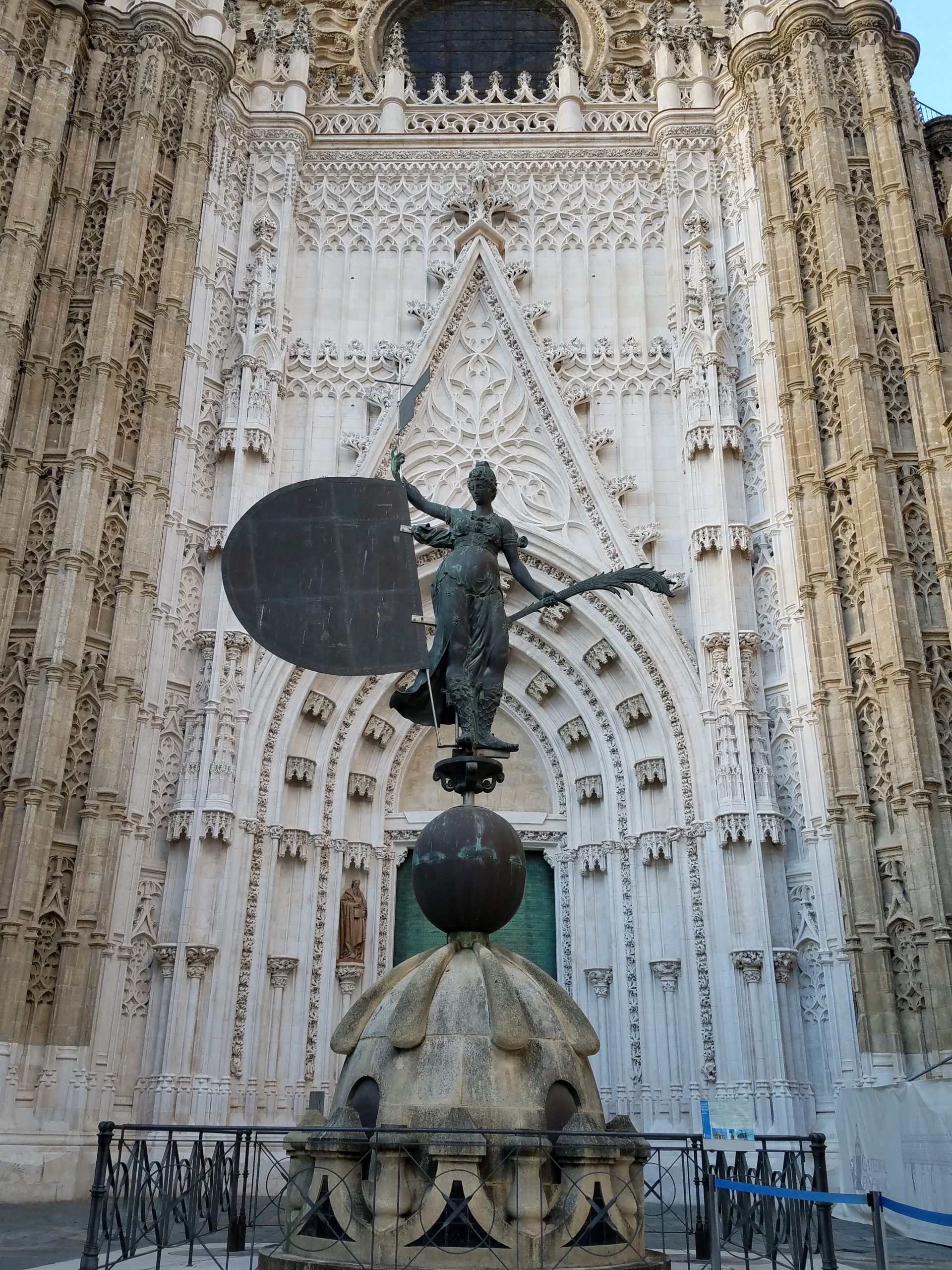
It is very likely that the surface of the Giralda was reddish in color. During a restoration carried out in 2018 it was discovered that the Giralda did not show the brick as we see it today, but was coated in red. At least it is known that this is how it was in Almohad and Renaissance times. Apparently, by means of paintings and engravings made centuries ago, the reddish color of the tower has been confirmed.
The Giralda is the result of the union of the architectural styles of the cultures that inhabited Seville for thousands of years. For those who live in Seville, as well as for the visitor or tourist, its contemplation is almost obligatory, not to say, beautifully unavoidable.
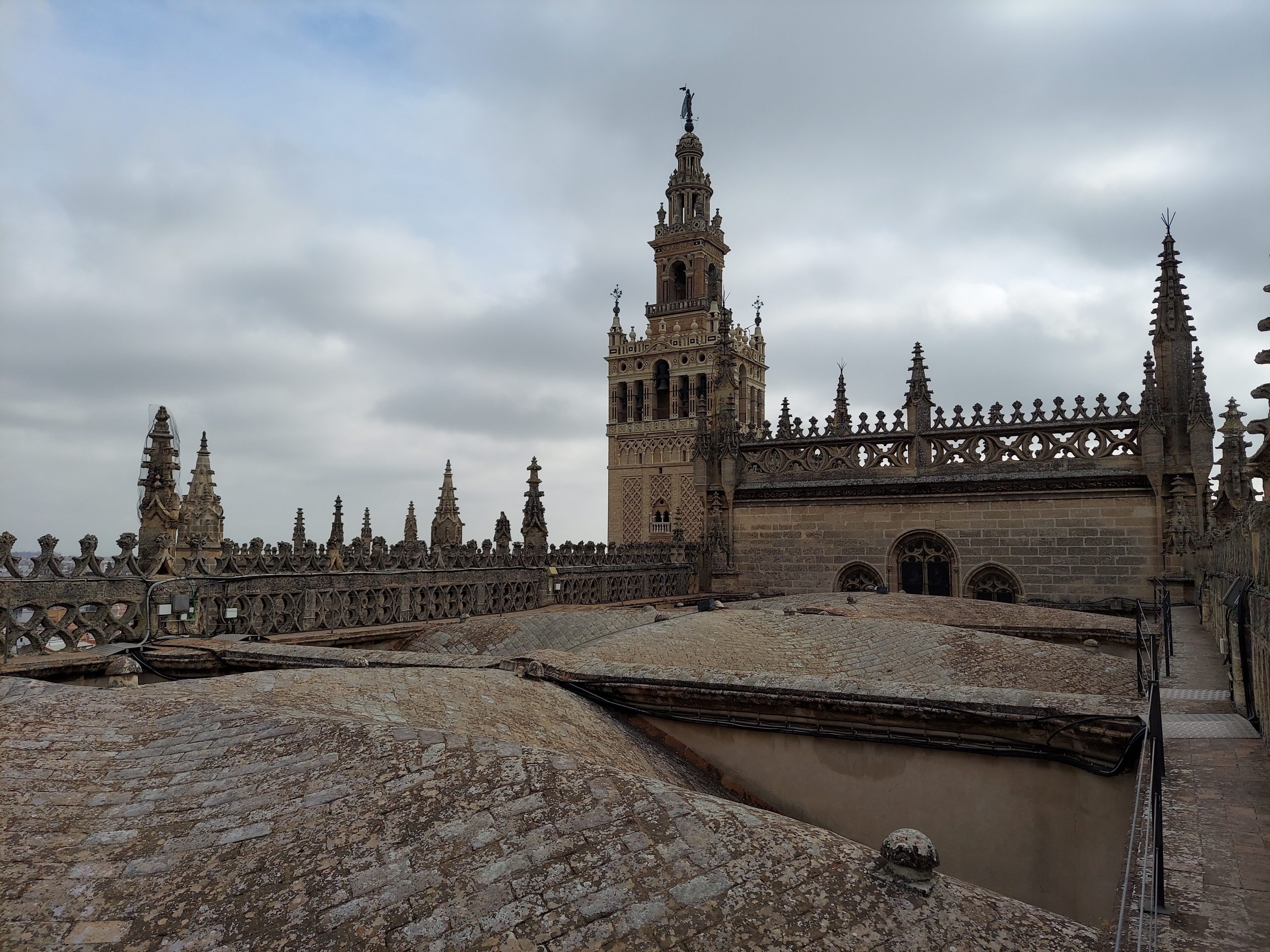
And, although to access the level of bells that is currently visitable area of the Giralda, you have to climb the 35 levels of ramp and a final stretch of 17 steps, which would seem an eternity, we assure you that little by little you get there. In fact, it is much better than climbing stairs. And, in the end, the panoramic views you will enjoy from the bell tower are well worth the climb.
We close this article sharing a bit of the ringing of the bells of the Giralda.
Resources:
- https://www.visitasevilla.es/monumentos-y-cultura/la-giralda
- https://www.visitasevilla.es/historia/la-giralda-y-su-historia
- https://es.wikipedia.org/wiki/Giralda
- https://www.catedraldesevilla.es/la-catedral/edificio/la-giralda/
